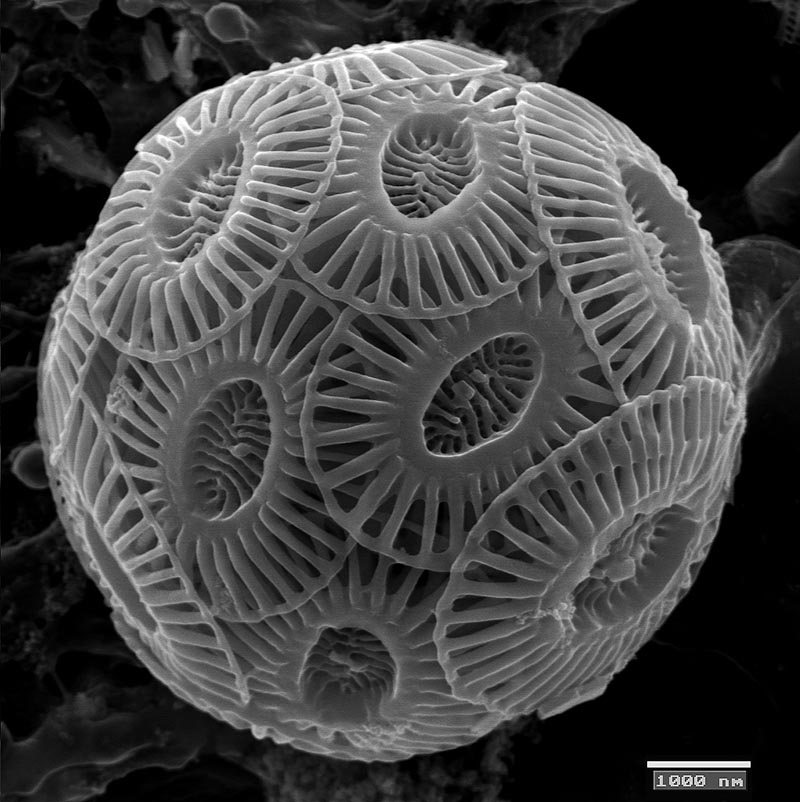Image taken with a field emission electronic microscope. Collection of photographs of phytoplanktonic algae by Juan Antonio Alcober Bosch. M[UV]HN.
Coccolithophorids are an important group of organisms, mostly marine, that at some point in their cycle present a shell formed by small calcareous pieces characteristic of each taxon. Usually, this phase is the planktonic one. They are also known as calcareous nanoplankton, due to their small size. To study them, it is strongly needed the use of electronic microscopy. E. huxleyi is the most abundant coccolithophorid worldwide and has a vital role in the oceanic food chains and its biogeochemistry. As a primary producer, it contributes to the fixation of atmospheric CO2 into organic matter and the production of calcareous coccoliths, which after the death of the cell and its precipitation contribute to the formation of important calcareous sediments. The relevance of this specie on the marine ecosystems translated into being the first haptophyte algae to have its genome sequenced.


















